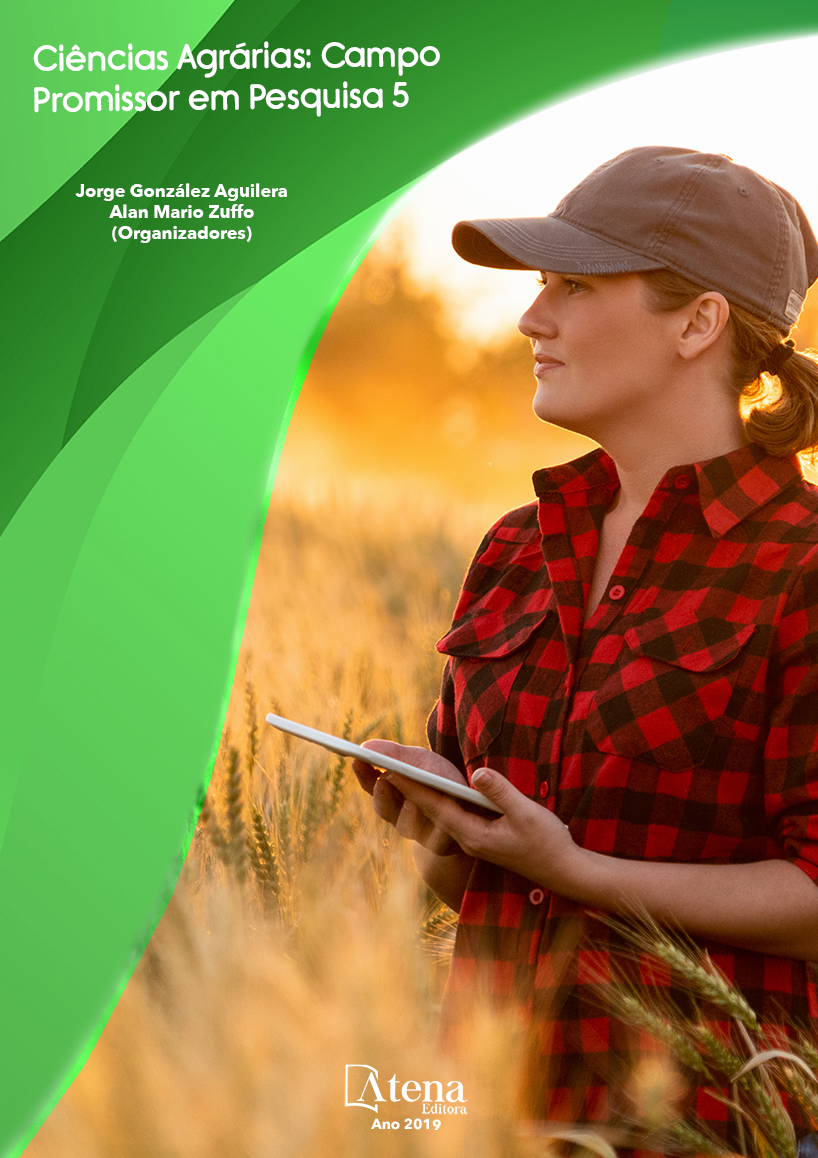
INDICADORES BIOLÓGICOS DE QUALIDADE DO SOLO EM DIFERENTES SISTEMAS DE USO DO SOLO NO MUNICÍPIO DE CAPITÃO POÇO PA
A atividade agrícola tem sido
a principal responsável pelo processo de
degradação do solo e consequentemente vem
provocando perdas da capacidade produtiva
do mesmo. Mediante essa situação, têm-se
buscado novas práticas que minimizem os
prejuízos causados ao solo pela agricultura.
Essas práticas visam melhorar a qualidade
físico-química do solo como sistema de pousio,
sistemas agroflorestais, utilização de gramíneas
como cobertura do solo, etc. O presente
trabalho teve como objetivo avaliar a qualidade
do solo através da biomassa radicular, estoque
de carbono, macrofauna edáfica e diagnóstico
rápido da estrutura do solo (DRES), em latossolo
amarelo em diferentes tipos de sistemas
(pastagem, capoeira e sistema agroflorestal). O
trabalho foi realizado na Universidade Federal
Rural da Amazônia (UFRA), no município de
Capitão Poço - PA. Para a determinação da
biomassa radicular e estoque de carbono foram
coletados sete amostras de solo na profundidade
de 0-10 cm por sistema, para macrofauna
foram coletadas cinco amostras por meio de
monólitos nas dimensões de 25cm x 25cm e
profundidade de 30 cm por sistema e para o
diagnóstico rápido da estrutura do solo foram
obtidas três amostras por sistema, totalizando
nove amostras indeformadas O sistema que
apresentou a maior quantidade de biomassa
e carbono radicular foi à capoeira, já para a
macrofauna o maior número de indivíduos foi
encontrado no SAF’s na profundidade de 10-20 cm. Para o DRES, os sistemas de
capoeira e sistema agroflorestal apresentaram qualidade da estrutura do solo regular
de acordo com a tabela de interpretações.
INDICADORES BIOLÓGICOS DE QUALIDADE DO SOLO EM DIFERENTES SISTEMAS DE USO DO SOLO NO MUNICÍPIO DE CAPITÃO POÇO PA
-
DOI: 10.22533/at.ed.19119200615
-
Palavras-chave: Atividade agrícola, característica do solo, sustentabilidade.
-
Keywords: Agricultural activity, soil characteristics, sustainability
-
Abstract:
The agricultural activity has been the main responsible for the process
of soil degradation, and consequently caused losses of the productive capacity of the
same. Upon this situation, we have sought new practices that minimize the damage
caused to the soil for agriculture, these practices are aimed at improving the physicochemical
quality of the soil. There are several methods used to identify the quality of
soil as: root biomass, carbon, soil macrofauna and quick diagnosis of soil structure,
considering the above, the objective of this work was to evaluate the quality of the soil
through the root biomass, carbon stocks, edaphic macrofauna and rapid diagnosis of
soil structure, in Yellow Latosol under different types of systems (pasture, capoeira and
agroforestry system). The work was carried out at the premises of the Universidade
Federal Rural da Amazônia (UFRA), in the municipality of Capitão Poço PA. For the
determination of the root biomass were performed collection of soil at a depth of 0-10
cm, per system, for macrofauna, five samples were collected by monoliths measuring
25 cm x 25 cm and depth of 30 cm per system and. To the rapid diagnosis of the soil
structure, three samples per system were obtained, totaling nine undisturbed samples.
The system that presented the highest amount of biomass and root carbon was to
capoeira, whereas for the macrofauna the largest number of individuals was found in
the SAFs at depth of 10-20 cm. For rapid diagnosis of the soil structure, the capoeira
and agroforestry systems presented quality of the regular soil structure according to
the table of interpretations.
-
Número de páginas: 15
- Maria Lucilene de Oliveira Gonçalves


